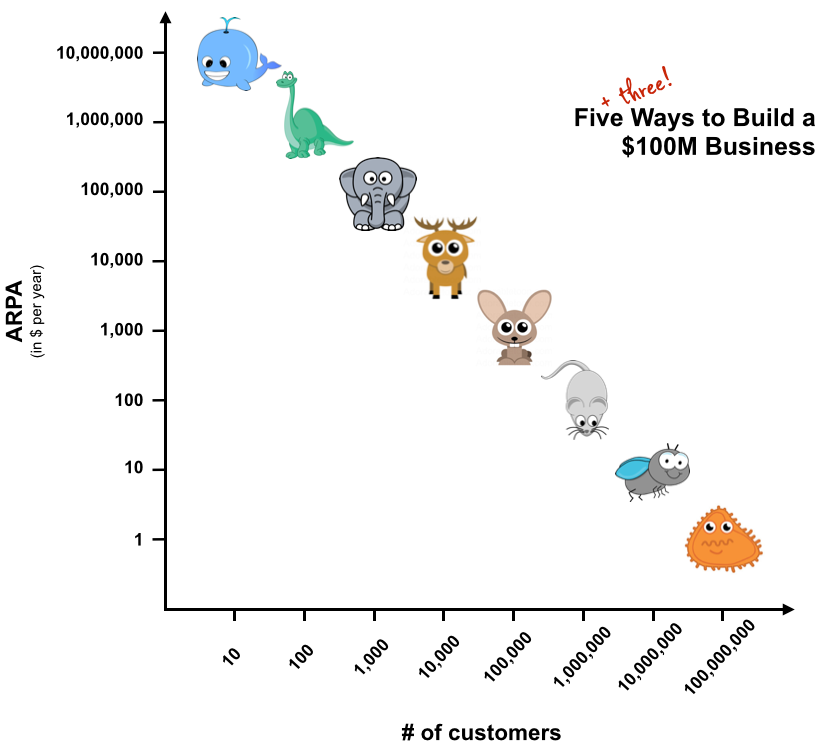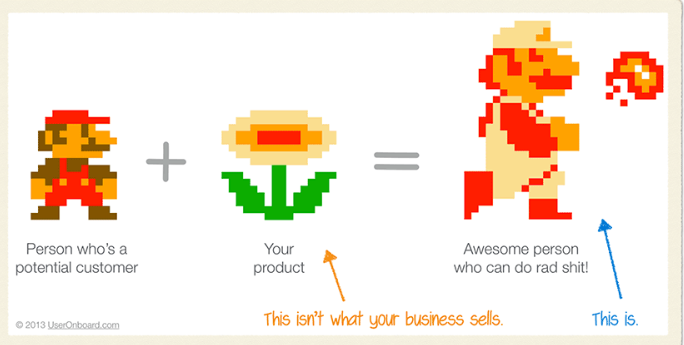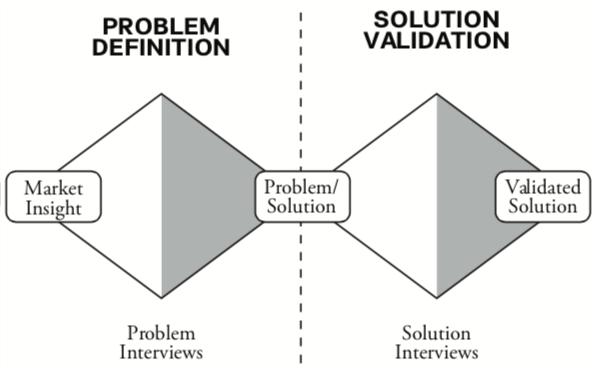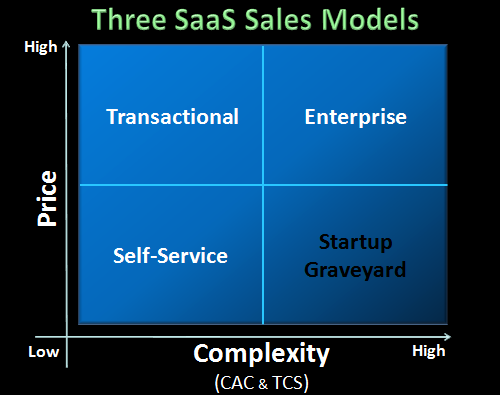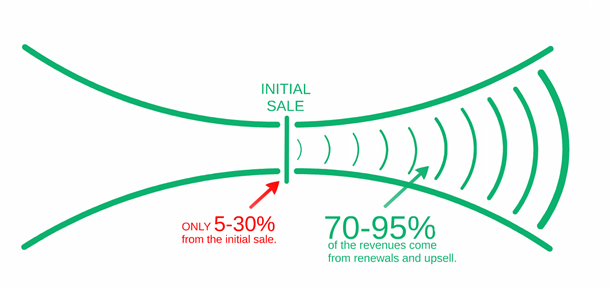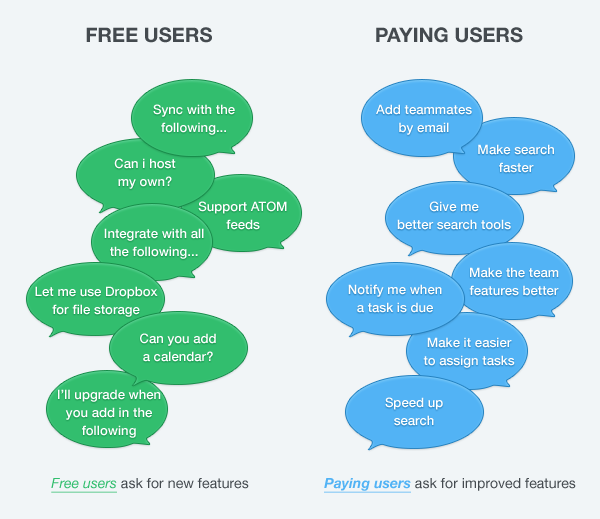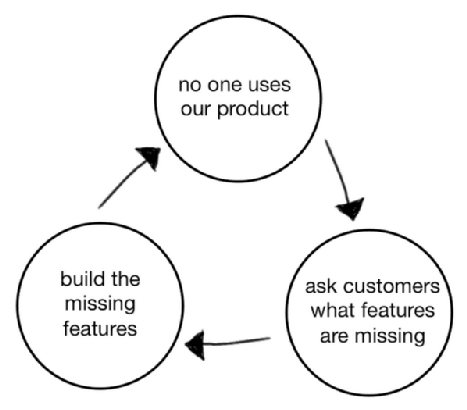Startup founders are notoriously self-reflective. They, along with their investors, spend a lot of time thinking through and creating Software-as-a-Service/SaaS frameworks to help improve their processes.
As a self-reflective founder myself, I spend a lot of time comparing and studying frameworks to find the best ways to understand and grow my business.
In SaaS, frameworks are shortcuts to understanding, learning and self-growth. To help B2B entrepreneurs focus on the best B2B SaaS frameworks, I compiled the 17 sales, customer development, growth and product management frameworks they need to use in 2025:
1) The Build-Measure-Learn Loop
Why it matters: Eric Ries’s Build-Measure-Learn loop is a key concept from The Lean Startup. This framework helps remind startup founders of the importance of iterating, staying lean and marking progress through validated learning. For startups, the speed of learning creates speed of growth. Iteration is key.
2) 8 Ways to Build a $100M Business
B2B SaaS Investor Christopher Janz originally wrote about five ways to build a $100 million business. He later added three more to the list.
Why it matters: This SaaS framework helps founders compare and visualize alternative business models. A business hunting mice (1,000,000 customers x $100/year) will be completely different from a business hunting elephants (1,000 customers x $100,000/year). The roles, channels, metrics and sales processes will greatly vary in relation to the average revenue per account (ARPA). Misunderstanding the type of business you’re in is a very dangerous mistake.
3) The Uniqueness Vs. Value SaaS Framework
A few years back, venture capitalist Lisa Suennen shared a great chart from former Apple Chief Evangelist Guy Kawasaki.
Why it matters: This chart helps communicate the importance of uniqueness when it comes to bringing technology to market. In a previous post, I expanded on this topic, explaining why startups need differentiated features in order to convince businesses to adopt their solutions. Without differentiation, your business will have to compete on price or features.
4) Features vs. Benefits
Why it matters: Too many technology startups communicate in terms of features, not benefits. This chart by Samuel Hulick helps communicate the importance of understanding your product from the customer’s perspective, not yours. Understanding the desired outcomes (e.g. do rad things!) of your buyers keeps you focused on creating real value.
5) The 4 Steps of the Customer Development Process
This chart, based on the Double Diamond design process by the UK Design Council, came together during the writing of Lean B2B.
Why it matters: There’s more to customer development than getting out of the building. This framework helps entrepreneurs understand the 4 steps of the customer interview process and their associated outcomes. Problem and solution interviews have both divergent and convergent phases. This chart helps remind founders of the importance of exploring broadly when interviewing customers.
6) The Three SaaS Sales Models (B2B SaaS)
The Three SaaS Sales Models framework was created by Joel York to help entrepreneurs (especially B2B founders) understand how pricing and complexity impact their go-to-market strategies.
Why it matters: Ultimately, your product’s price and customer acquisition cost (CAC) dictate the sales channels you can use to grow your business. A Self Service product can’t be commercialized by a sales team. An enterprise product won’t be sold exclusively through your website. This SaaS framework helps founders understand these dynamics.
7) Sales Interactions per Transaction Amounts
A few years back, I stumbled on sales expert Scott Sambucci‘s chart from his presentation on the Sales Model Canvas.
Why it matters: Although the actual numbers of interactions will vary from one industry to the next, this framework helps entrepreneurs set benchmarks for their sales and follow-up interactions. This B2B SaaS framework, like the previous, helps explain the relationship between the amount you charge and the complexity in closing the deal.
8) The 9x Effect
The 9x effect was originally introduced by John T. Gourville in Eager Sellers and Stony Buyers.
Why it matters: Entrepreneurs often overvalue their products. Business customers often overvalue their current solution. To get companies to buy and make a change, prospects need to perceive 10x more value. Because of this framework, a lot of investors and entrepreneurs talk about creating products that are 10x better than the alternative.
9) Purchase Drivers per Customer Types
This framework was created by entrepreneur Steven Forth. It builds on the technology adoption curve from Crossing the Chasm.
Why it matters: This chart helps communicate the differences in mindsets and motivations across the six stages of buyers. Business buyers are not exempt from emotional decision making. By understanding their realities, you can learn to mold your marketing messaging to their needs and aspirations.
10) The 4 Forces Influencing a Customer to Switch
There are different versions of this framework available online. I like Intercom’s version because it communicates the challenge visually.
Why it matters: There’s always competition (business without competition can be a red flag). Whether you’re replacing a manual process, an Excel spreadsheet or a piece of software, your product always needs to overcome the status quo coefficient to get customers to switch to a new solution. It’s never easy but, if you’re able to understand their concerns, you’re in a better position to address them.
11) Revenue Breakdown: Initial Transaction vs. Retention Phase
This model was originally created by Totango CEO Guy Nirpaz. It was later popularized by investor David Skok.
Why it matters: This chart helps communicate the impact of retention and customer success on revenue generation. Sales teams often try to maximize the initial transaction, but it’s important to realize that up to 70 to 95% of the revenue generated from a customer will come from recurring or expansion revenue.
12) Feature Requests for Free and Paying Users
This chart was created by Intercom co-founder Des Traynor for this post.
Why it matters: Feature requests are extremely common for founders. As a rule of thumb, feedback from non-paying users tends to focus on additions to the product while feedback from paying customers focuses on improvements to the product. It’s important to properly assess and categorize user feedback to avoid building bloat, or building for the wrong users.
13) The Whole Product Definition
The Whole Product is a concept introduced by Bill Davidow in Marketing High Technology.
Why it matters: In B2B, there are a lot of things that must be put in place before you can be considered a valid vendor by your prospects. The Whole Product is the concept of that minimum set of requirements (features, certifications, partnerships, etc.), and is intrinsically tied with sales and Product-Market fit.
14) The Retention Curve SaaS Framework
The retention curve was originally introduced by Brian Balfour during his talk Growth Is Good, But Retention Is Forever.
Why it matters: As Brian Balfour says, retention in SaaS is the silent killer. If you look at any retention curve, it will start at the top along the Y-axis and then slowly (or abruptly) tend to zero. For a B2B SaaS product to succeed, the retention curve must eventually flatten as users continue to use the software.
Andy Carvell, co-founder at Phiture Mobile Growth, added the following model to help highlight the retention gains possible through constant interactions with customers:
15) The Product Death Cycle
Designer David J. Bland spontaneously shared this chart for The Product Death Cycle on social media.
Why it matters: This chart illustrates the reaction of many entrepreneurs when their product does not get the level of usage they were hoping for. As the model states, this mindset leads to bloat and eventual death when businesses should really commit to a niche, solve problems and increase value.
16) Startup Risk Types by Financing Rounds
This chart was originally created by investor David Skok for his blog.
Why it matters: Raising capital in B2B requires a great understanding of the investment landscape and the stage your business is at. With this simple model, entrepreneurs can visualize the risks and metrics investors look for at each investment round. For example, at the Seed stage, investors look for signs of product-market fit.
17) The Valley of Death in Technology
This chart has been widely distributed on the Internet. The origin is unknown.
Why it matters: This chart is all about perseverance. Although the stages, duration and intensity of the highs and lows will greatly vary, this framework helps communicate the importance of making it through the Valley of Death.
How to Use a B2B SaaS Framework
There’s no one-size-fits all model to growing a software business. Although I personally use these SaaS frameworks in my work and to help other entrepreneurs, it’s important to keep in mind that they may not apply to your business.
Frameworks are shortcuts to thinking patterns; they help simplify complex concepts. Use judgement to find the best SaaS product frameworks for your business. They can be very useful in your work, but if the shoe doesn’t fit, it doesn’t fit…
More on B2B SaaS Frameworks
- 211 Startup Tools, Posts & Resources for B2B Entrepreneurs in 2025
- How to Find Your Best Customers with a Market Segmentation Analysis
- How to Find B2B Business Ideas in Your Workplace
Download the First 4 Chapters Free
Learn the major differences between B2B and B2C customer development, how to think about business ideas, and how to assess a venture’s risk in this 70-page sampler.
Working on a B2B Startup?
Join our free email course to learn all you need to know:


